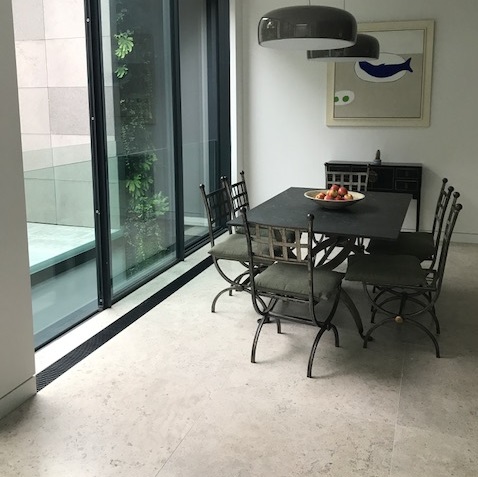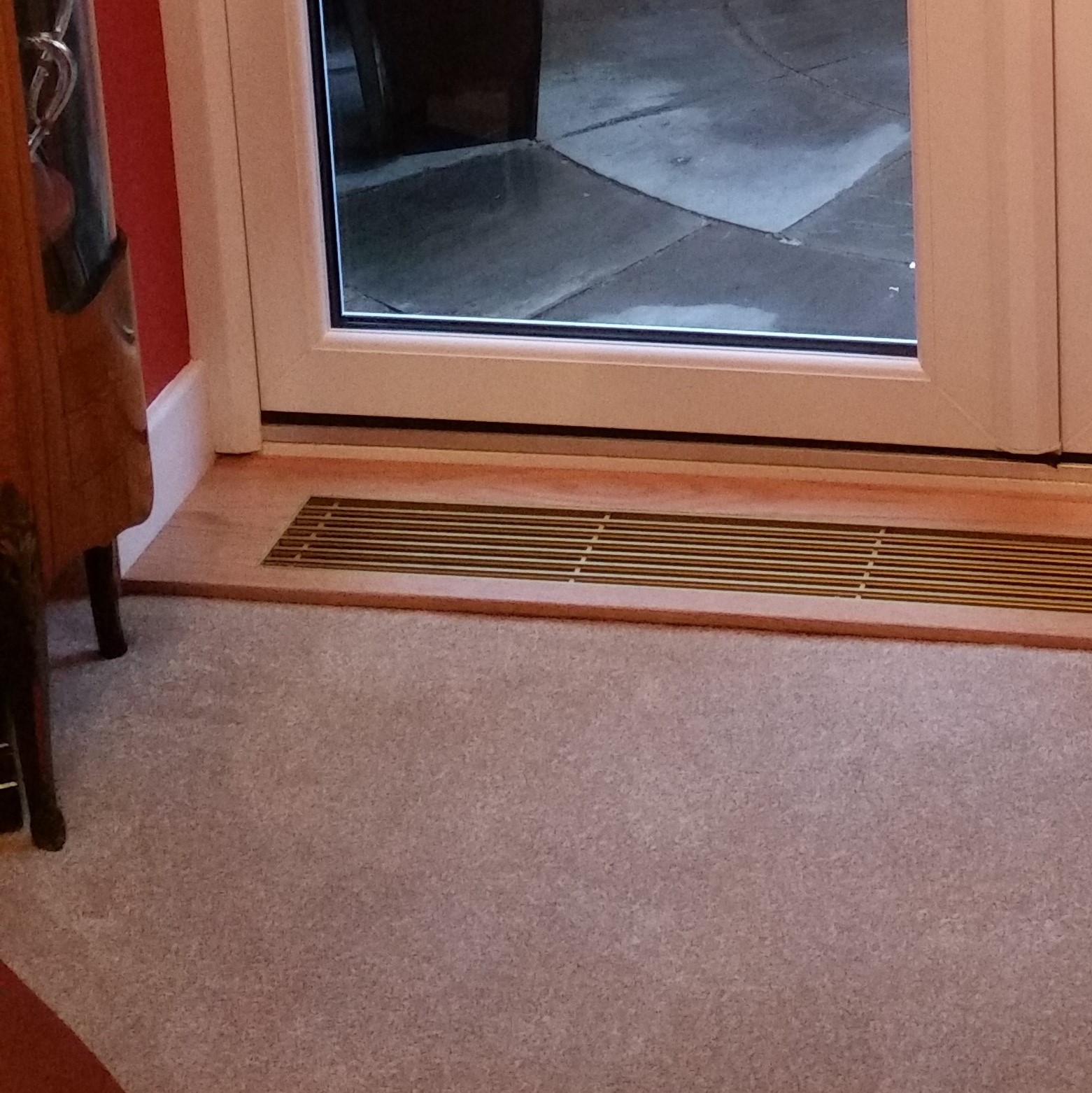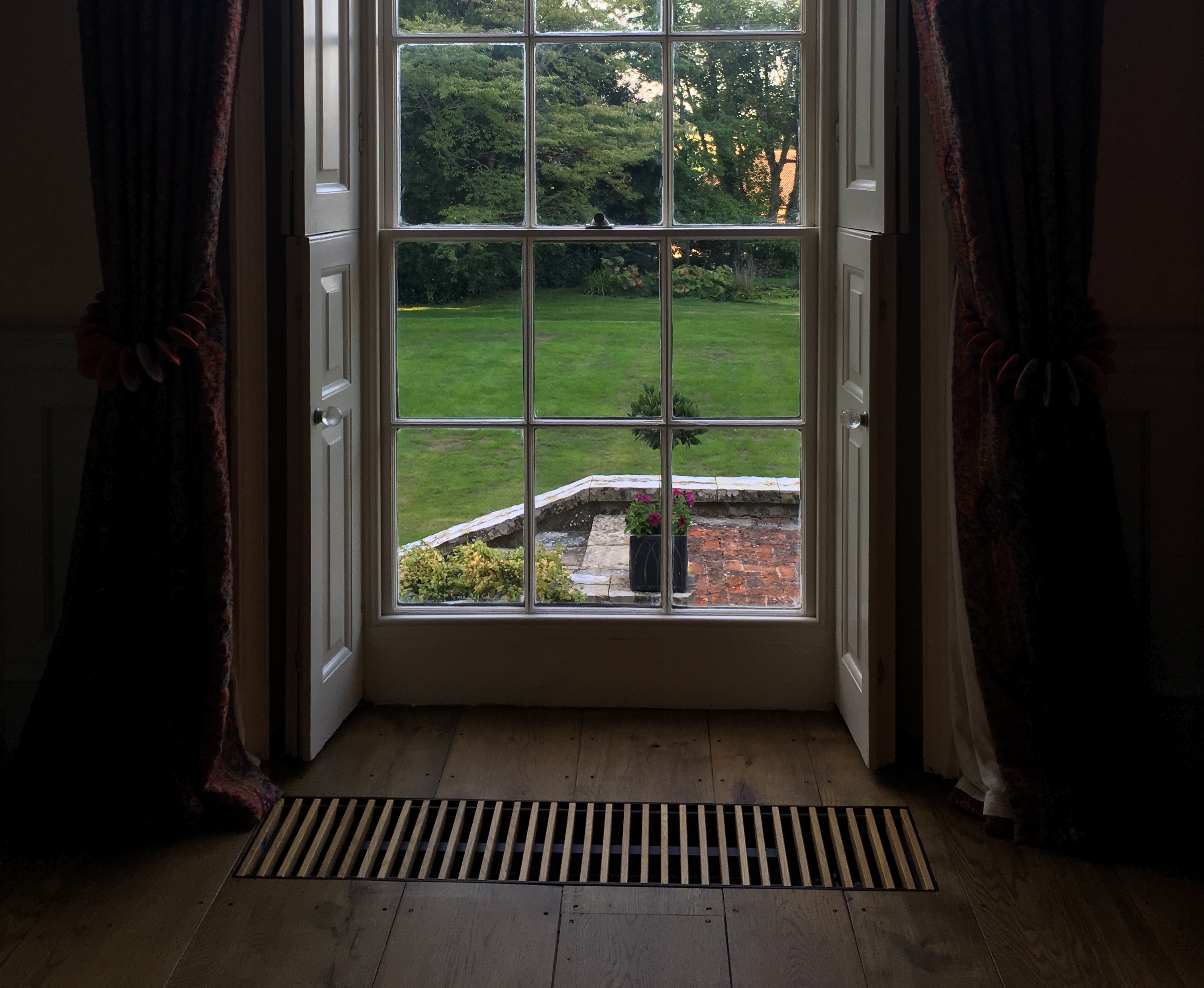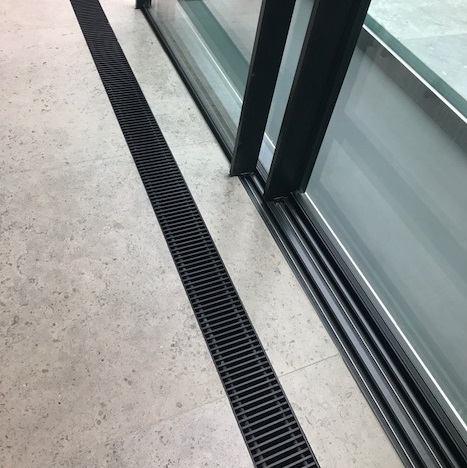Trench Radiators discussion25 August 2018 | Admin COMPARISON OF TRENCH HEATERS AND WALL-MOUNTED RADIATORS There are so many things to take into consideration when moving into a new home and one of the most important things you will have to consider will be your buildings architectural design and interior. In picking an architectural design type, you must consider the type of heating system which will be utilised in the home. Two of the most common types of heating system are the trench heating system which is mounted underfloor and wall-mounted radiators. Wall-mounted radiators have been in vogue for so many years. However, most modern architectural and interior décor designs are starting to favour trench heating systems, and in this article, we will be comparing both systems to determine what benefits they have over each other. While it is important to consider your type of central heating radiator system it is also key that you look at purchasing from reputable radiator manufacturers and suppliers. Jaga Radiators through Trenchstyle.co.uk, TradeLST.co.uk and TrenchHeater.co.uk sell both Trench heaters and Wall Mounted Radiators such as the Jaga Mini Canal, Jaga Guardian and Jaga Tempo LST Radiators as well as the Jaga Strada Wall mounted radiators. Jaga are renowned for utilising premium quality materials, cutting edge design and advanced construction techniques to produce Premium grade radiator systems. 
Modern house designs tend to have lots of open spaces usually with bi-fold doors or large patio windows. Such open spaces and large amounts of glass makes placing wall-mounted radiators awkward. A problem which underground trenches solve. The trench radiator can be placed in front of the window, running across its entire length with the heat coming from the trench acting as kind of an ‘air curtain’ restricting draught and heat loss thereby increasing efficiency. In addition, it prevents condensation buildup on the windows. In addition, unlike wall-mounted radiators which usually come in a specific color and design, the grilles on underfloor trench heaters come in different materials and designs which means they can be a part of the room’s aesthetics either complementing or contrasting. Also, trench heating systems can be more efficient than wall-mounted radiators. On the downside, trench heating systems tend to accumulate dust which makes maintenance important although cleaning is a straightforward process. Simply remove the grille whether roll up or rigid this allows you to vacuum the trench then the grille cleaned using a damp cloth. In conclusion, the underground trench heating system and wall-mounted radiators have their advantages and disadvantages, and ideally, we would recommend a combination of both systems. However, if you were to make one pick, then wholeheartedly recommend an underground trench heating system. 
CONTROL OPTIONS FOR A TRENCH HEATING SYSTEM The control options on a trench heating system are no different from what is found on a wall-mounted or free-standing radiator. Generally, there are three main control options for a trench heating system, and they are the boiler control, room thermostats and individual room control. • BOILER CONTROL If the trench heating system is heated from a boiler, what you have is a ‘wet’ central heating system regardless of whether it is gas, LPG or oil-fired. Ideally, the entire control should include a boiler thermostat. The boiler thermostat would help control the heat of the water running through the trench elements. Therefore, if you turn the boiler down or off, it affects the trench system, and while this is perfect for small trench units, it is less than ideal for larger installations. • ROOM THERMOSTATS A room thermostat provides more control over the trench heating system. It prevents the space from becoming warmer than necessary by turning on automatically until the room gets to the desired temperature. Some room thermostats are programmable, combining time and temperature controls allowing you set different temperatures for different times of the day. This kind of control is ideal when solar heat gains through the glazed facades are expected at particular times. • INDIVIDUAL ROOM CONTROL In a situation where occupancy differs from one room to the next, temperature requirements would vary too. Individual room control is ideal for controlling the entire system and can also differ temperature requirements in different parts of the building. This control is achieved using Thermostatic Radiator Valves (TRVs) which instead of controlling the boiler and its temperature reduce the flow of water through the trench radiator they are fitted to. Therefore, depending on the level which individual trench is set to, it senses the air temperature around it and the TRV adjusts above or below the applied setting by adjusting the water flow. Having a standard form of control for the home is a good way to go when designing a heating system and the one you choose to go with will depend mainly on the size and nature of the apartment you want to heat. 
JAGA TRENCH AND PERIMETER HEATING DESIGN CONSIDERATIONS There are a number of options available when designing a façade heating system and while radiators can be used, they obscure windows, take up valuable floor space and can be obtrusive. On the other hand, trench heating systems are very discreet, free up space and don’t obscure vision through the glazing. On the other hand, if the space beneath the floor is restricted or the floor solid, then low-level perimeters become an option. Jaga perimeter heaters provide all the benefit of a trench heating system – requires minimal dimensions, circulates and heats cool air from windows and are ideal where trench heating systems can’t be installed. Jaga trench and perimeter heating systems are discreet, elegant and easy to install. They can be applied in any building including offices, universities, airports, hotel and conference centers, shopping centers and residential buildings. They can be combined with traditional boiler systems, heat pumps, condensing boilers, and other renewable energy sources. Jaga Radiators natural and perimeter heating products feature a unique Low H2o technology which provides faster response, more comfort and powerful heat output. In certain projects, the Jaga DBE fan-assisted trench and perimeter heating provide the optimum solution. This is especially applicable to shallow floor structures where there are limitations to the possible trench size; where the heat requirements are especially high; or where they are a part of a low-temperature system powered with heat pumps or other renewable energy sources. An illustration of a design heating system shows that a natural trench sized 140mm high by 340 mm wide gives 501 watts per square meter. While the same trench product specified in a dynamic fan-assisted version gives an average output of 1548 watts per meter with outputs quoted at Δ∆T 50. i.e. 75/65/20). Another innovation is that with some Jaga dynamic trench heating products fresh air can be introduced from the trench rather than requiring the introduction of a separate ventilation system. The natural trench heating system comes as the mini canal and canal compact and canal plus. There are four different kinds of canals in the dynamic trench heating system and they are the mini dynamic, micro, clima and quarto. The natural perimeter heating comes as mini freestanding while the dynamic perimeter comes as knockonwood freestanding DBE and the mini freestanding DBE. 
TRENCH HEATING A trench heating system is a heating system which eliminates the need to have standard radiators on the wall. It comprises of trenches which are dug within the floor with a simple “convector unit” connected to the heating system then finished with a grille system. Since the system uses natural convection to provide heat for the entire room, it can be designed to provide heat wherever needed. The size of a trench heating system determines the amount of heat it produces and its width and depth determine the size of its heating element and the amount of air that can be drawn in through the grilles and recycled back out. To increase the air flow and heat in the system, a subtle fan system can be installed within the trench. Usually, the trench heating system can be installed around the perimeter of the room and the heating grilles installed where the client desires. In some occasions, it can be fitted upstairs and because the design of the system can be customized to the needs of the customer and room features such as bay windows don’t pose any problem during installation. A trench heating system has quite a number of advantages over the more traditional heating systems. The most common is that the radiator center’s system is especially effective as a result of the use of ‘low water’ high heat output heating element. Heating minimal amounts of water prove effective when used in conjunction with ground and air source heat pump systems. Also, trench heating systems provide an even source of heating eliminating draughts and cold spots. A trench heating system is particularly suitable for apartments which house persons with respiratory difficulties like asthma or other types of allergies. Unlike wall-mounted radiators, trench heating systems provide less air turbulence reducing the amount of dust and allergens in the air thereby creating a cleaner environment. Also, condensation isn’t a major issue with a trench heating system making it ideal for apartments with floor to ceiling windows. This is why you find trench heating systems in modern properties which are more likely to have this style of architecture. 
RUNNING A HYBRID WITH A TRENCH HEATING SYSTEM Indoor air quality has been a significant cause for concern in the past decade especially since it’s linked with occupant health and well-being. Poor indoor air quality has been linked with Sick Building Syndrome which increases absenteeism and therefore, productivity due to poor air quality. Thus providing the correct level of ventilation is of utmost importance. Recently, there has been an increased use of hybrid technology in the heating and ventilation industry, and it’s now possible to purchase radiators which not only heat but have additional functions of ventilating and cooling. This breakthrough technology has been applied in trench heating systems, allowing the introduction of fresh air via direct connection outside, rather than having to install a separate ventilation system. This access can be gotten via ducts and grilles or by pressurizing a sub-floor void thereby creating apertures in the trench unit’s walls. However, the application of this technology has to be thoroughly considered to ensure optimum results. While the effect of a heating and ventilation trench system can readily be ascertained for each application, the results gotten depends on the size of the duct connection and apertures in the trench unit’s construction. Also, relative air pressure between the internal and external, and the temperature of the cold air entering the trench has to be considered. It should be noted that while a colder coil temperature increases the performance of the element, ensuring effective ventilation, the system requires a higher output to raise fresh air temperatures to ideal room conditions. Also, care has to be taken to ensure the flow of fresh air and consequent heat load doesn’t exceed the heating elements output else cold upward draughts could occur. Furthermore, with the increase in hybrid technology, trench heating systems can be fitted with ability to cool the interior as well. This is as a result of heat pumps now being equipped with a reverse cycle, generating hot and cold water. However, since cool air doesn’t rise, the trench heating system will be fan-assisted to force the cold air up. |